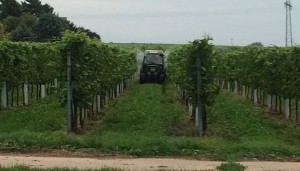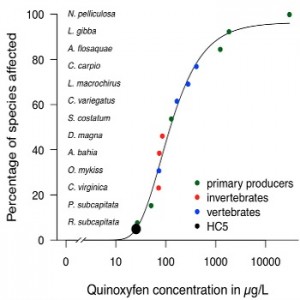In this post, the team Functional Aquatic Ecotoxicology announces two new thesis topics.
The team Functional Aquatic Ecotoxicology aims at assessing and understanding structural (amongst others biodiversity) and functional alterations in freshwater environments as a result of anthropogenic activities. If you are interested to do your thesis in our research group, have a look at the two new topics offered below!
Review on fungicide effects on non-target organisms
Fungicides are used to control a vast number of fungal pathogens during crop production, while their toxic modes of action are not specific to fungi, resulting in the potential for ecotoxicological effects in a variety of non-target organisms. Their risk assessment may benefit from a systematic investigation on the relative sensitivities of non-target aquatic organisms towards this group of pesticides and their modes of action.
In this context, this thesis will comprise a thorough review of the existing peer-reviewed literature regarding fungicide effects in non-target organisms as well as the statistical analysis of the gathered data. The latter will be accomplished using different tools such as species sensitivity distributions and meta-analyses to assess relative sensitivities and the influence of different relevant factors (e.g., features of general test design and used statistics).
The start of the thesis is flexible; a high level of commitment and some basic knowledge in R is expected.
Interested? Contact us via email or come and see us in building CI (blue) room 101a (second floor, to the left)!
Jochen Zubrod: zubrod@uni-landau.de
Dr. Mirco Bundschuh: mirco.bundschuh@slu.se
Optimizing test media for environmental impact assessment of nanoparticles
The fate of nanoparticles (mainly their agglomeration and sedimentation) and thus their environmental impact on aquatic ecosystems is largely driven by the composition (and the resulting ionic strength) of their aqueous surrounding. During ecotoxicity testing, however, it would fall to short too simply alter the test-mediums’ (aqueous surrounding) composition with the purpose to reduce the agglomeration rate of nanoparticles, while ignoring the potential effects of the mediums’ composition on the sensitivity of the test species. This challenge will be the central aspect of the offered thesis, which provides the opportunity to work in an interdisciplinary team composed of ecotoxicologists and environmental chemists on the cutting edge of nanoparticle research.
If you are interested in this topic or have further question please do not hesitate to contact us!
Dr. Mirco Bundschuh: bundschuh@uni-landau.de
Prof. Dr. Gabriele Schaumann: schaumann@uni-landau.de




